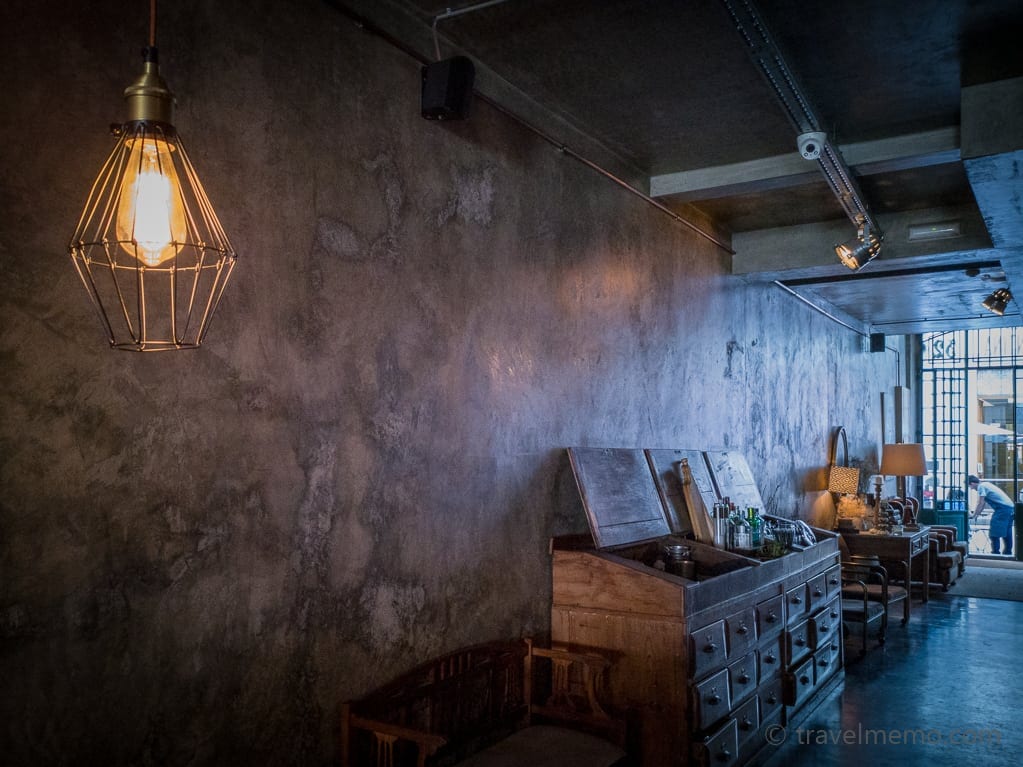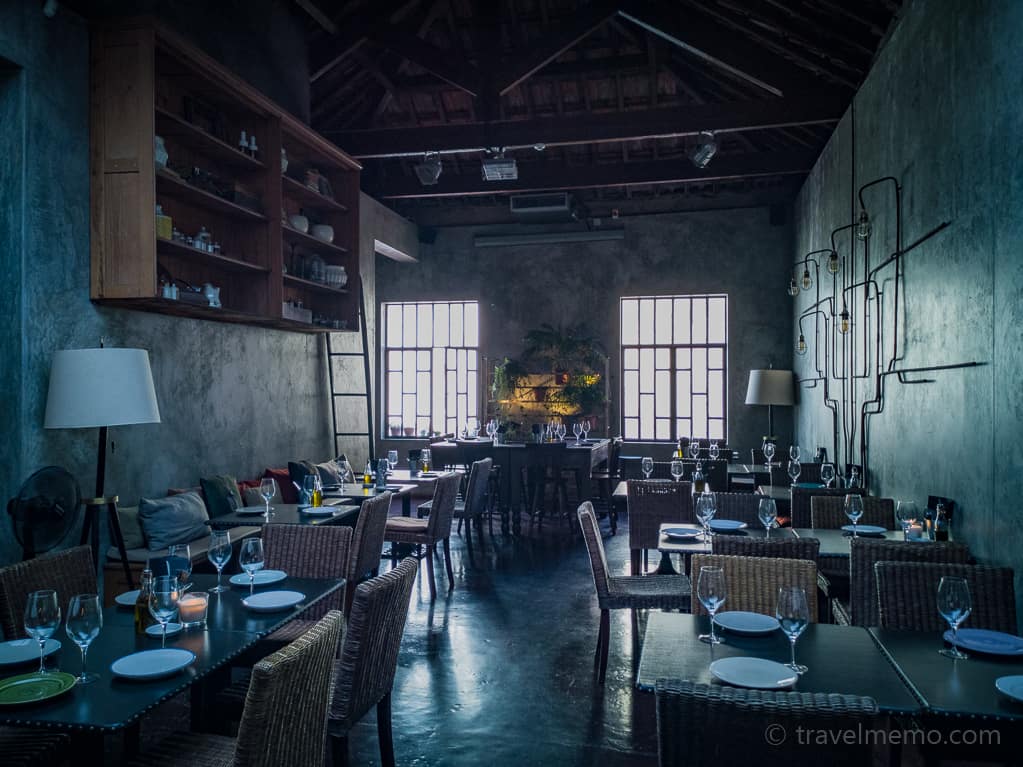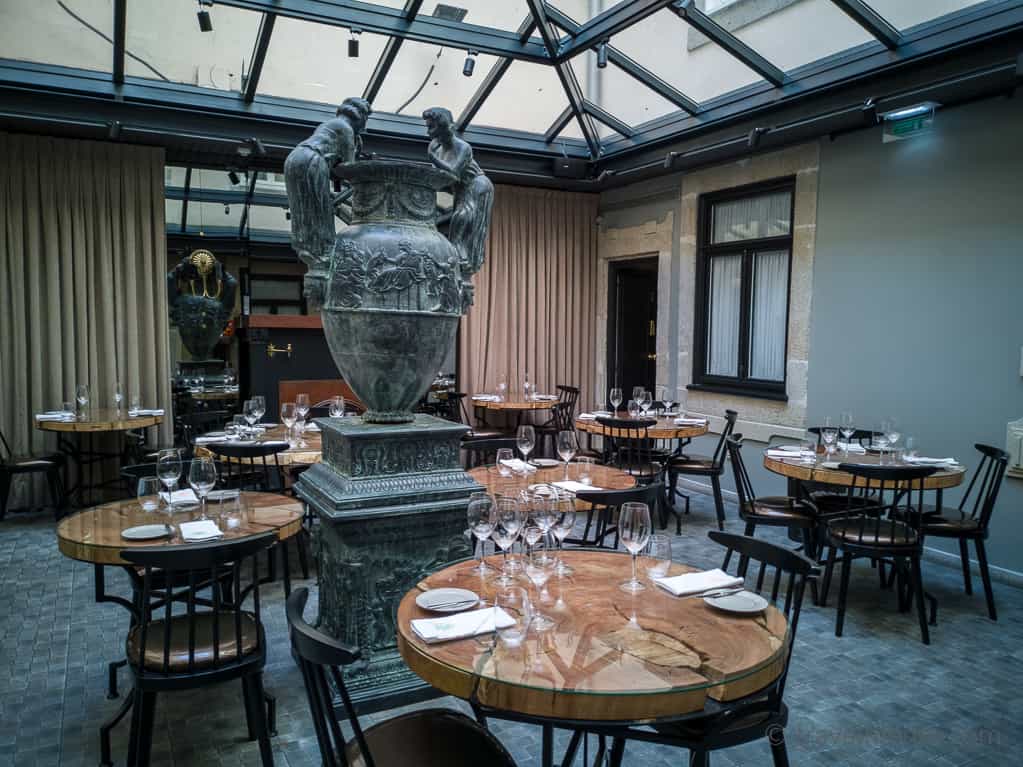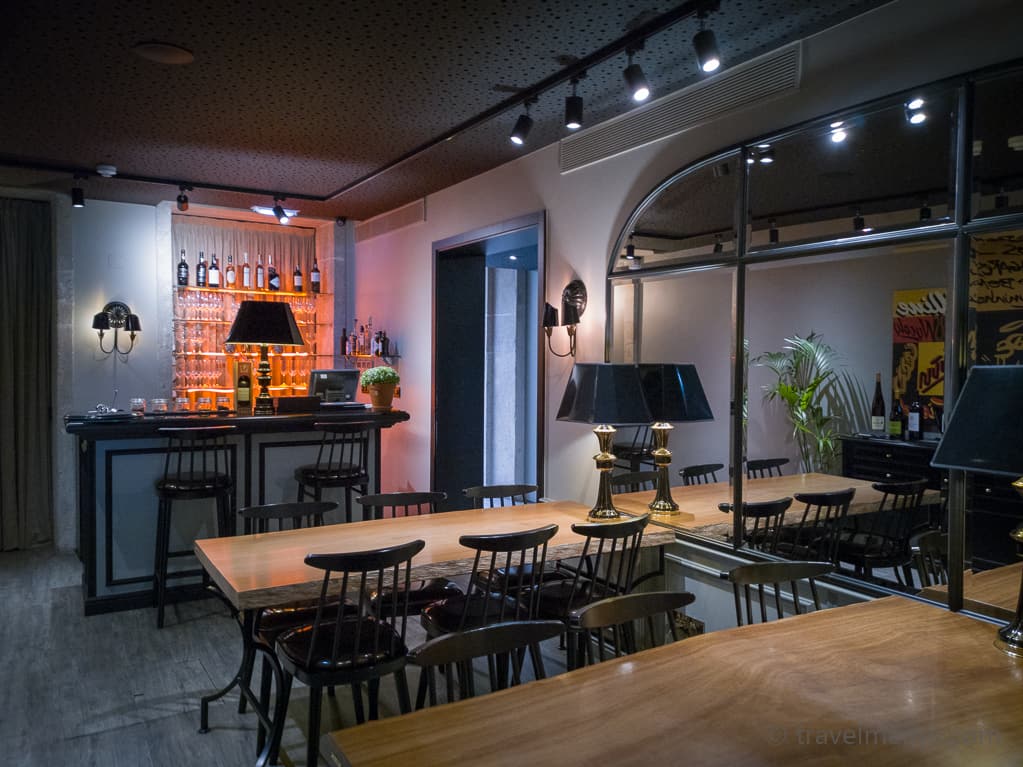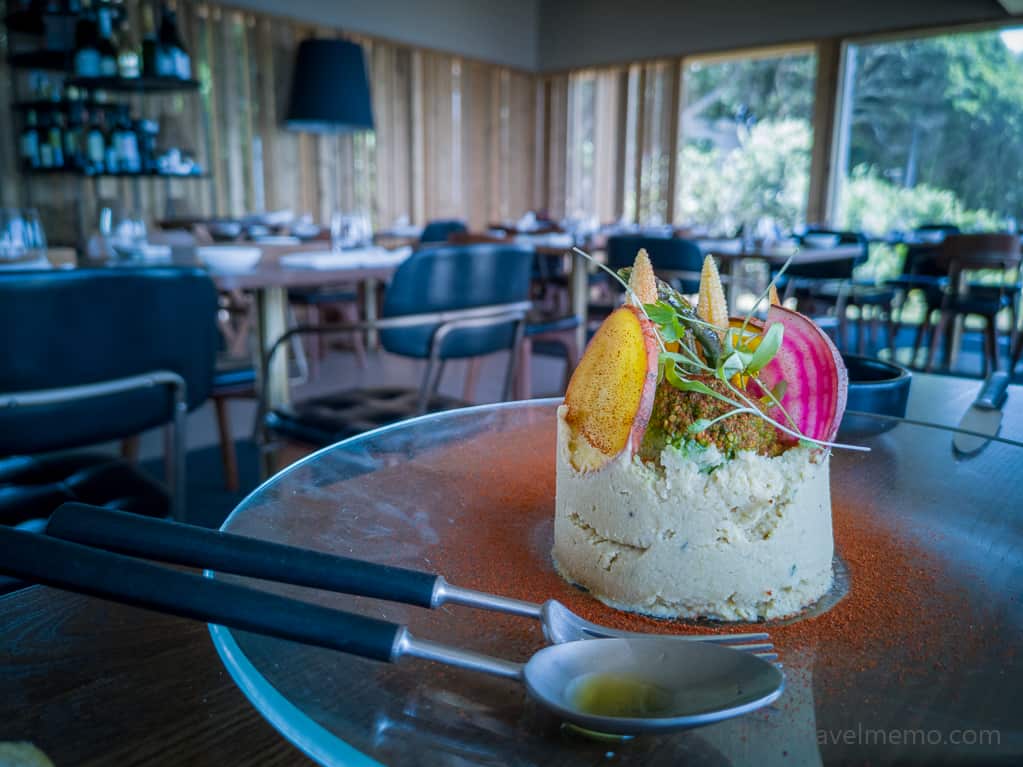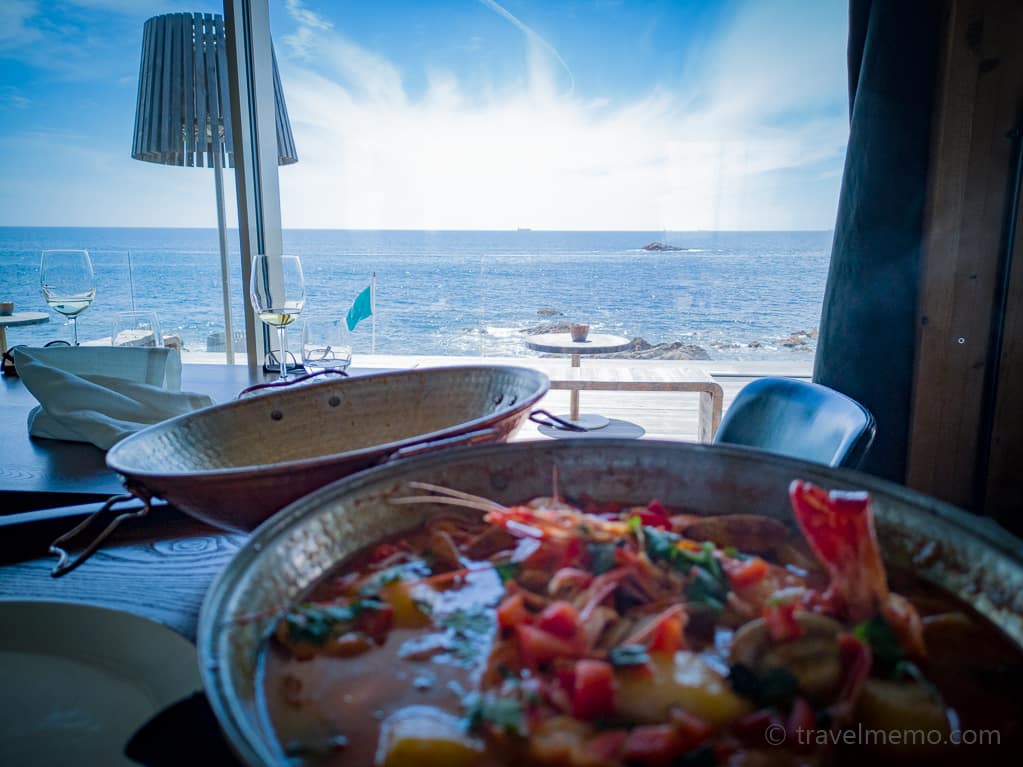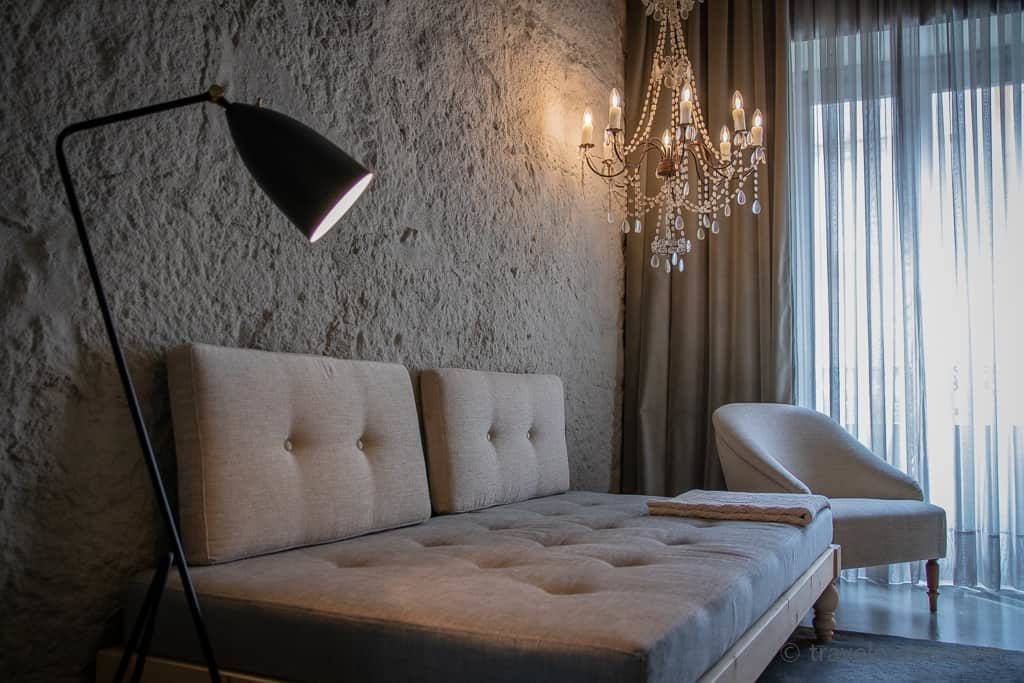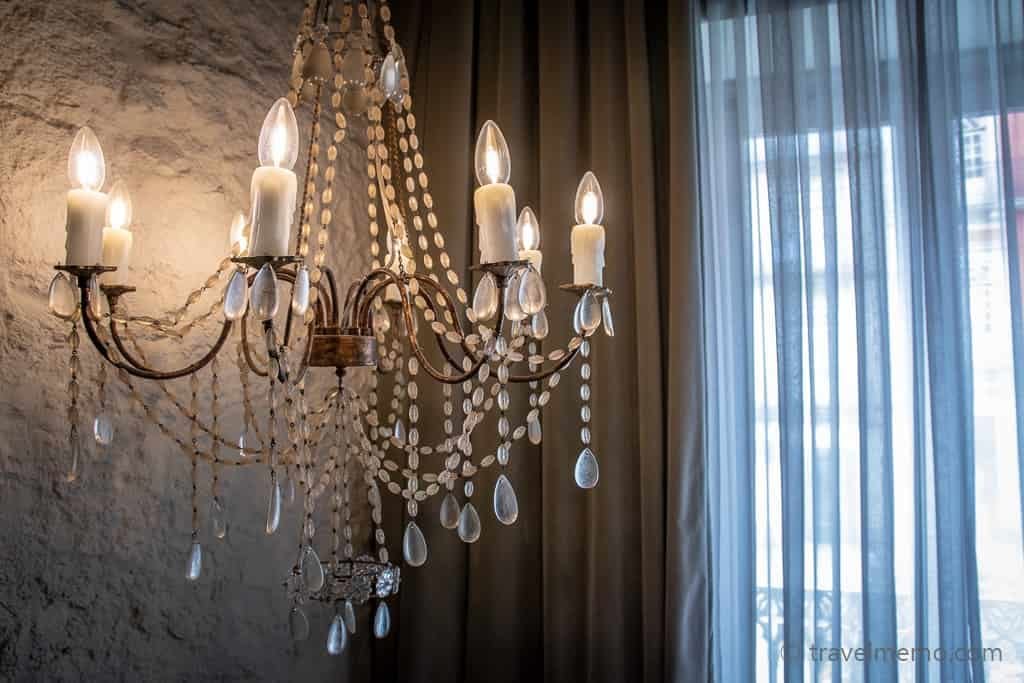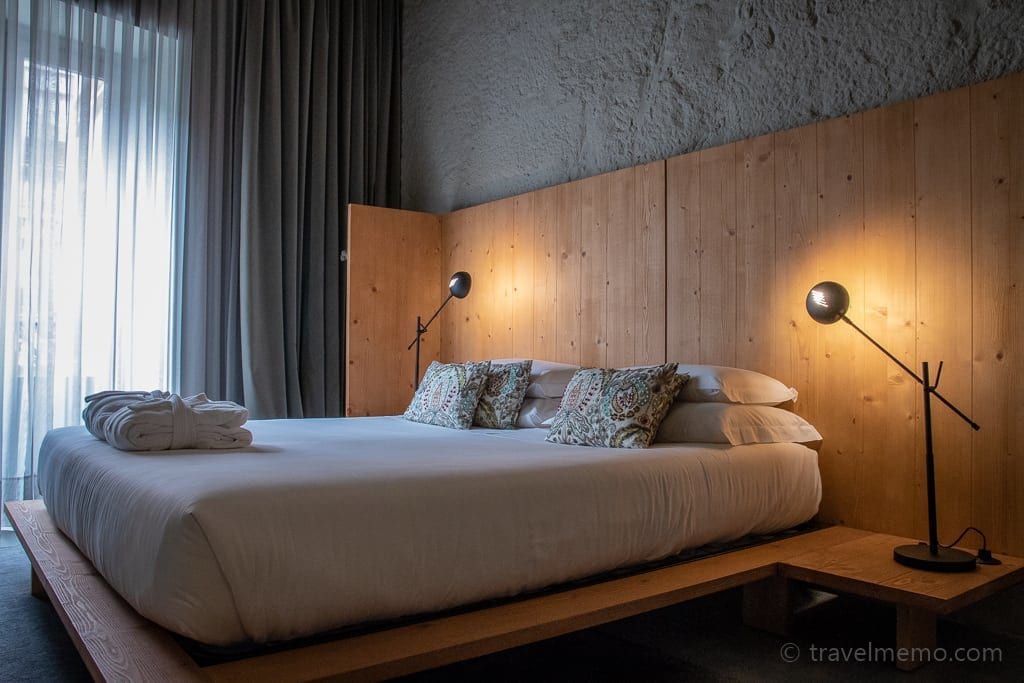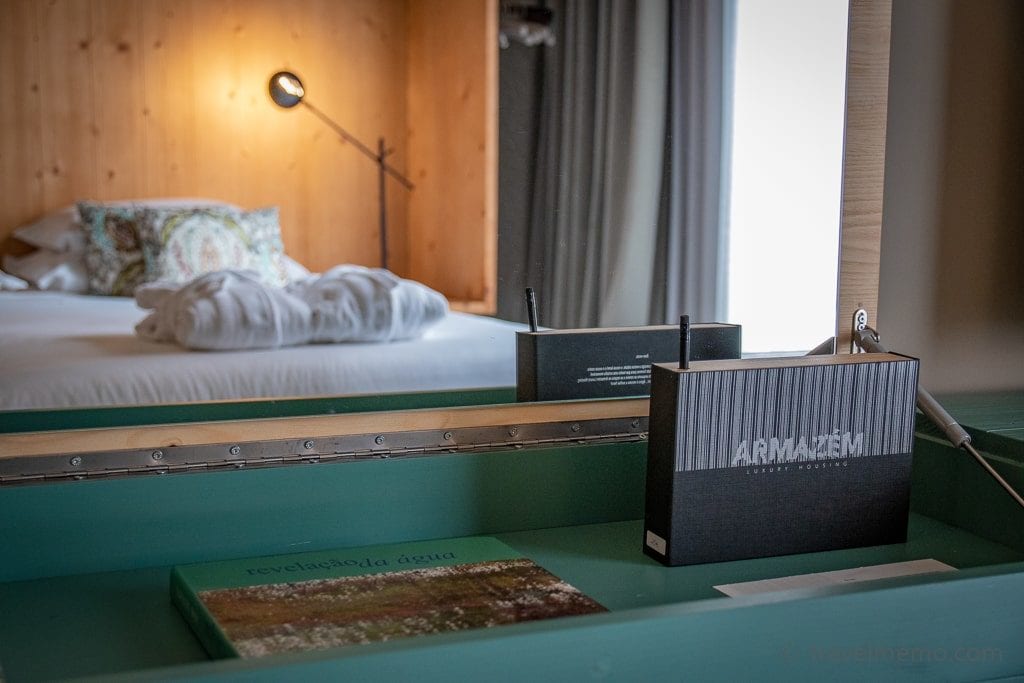Porto is the port wine capital. My first priority in this city therefore is clear: nip from the little port wine glass! And I certainly plan to indulge in a bigger glass of white or red wine, too. But there are more reasons to visit Porto than alcohol! So, read on, for more about Porto and my tips for a pleasant visit to the city and more.
This guide first appeared in German on reisememo.ch
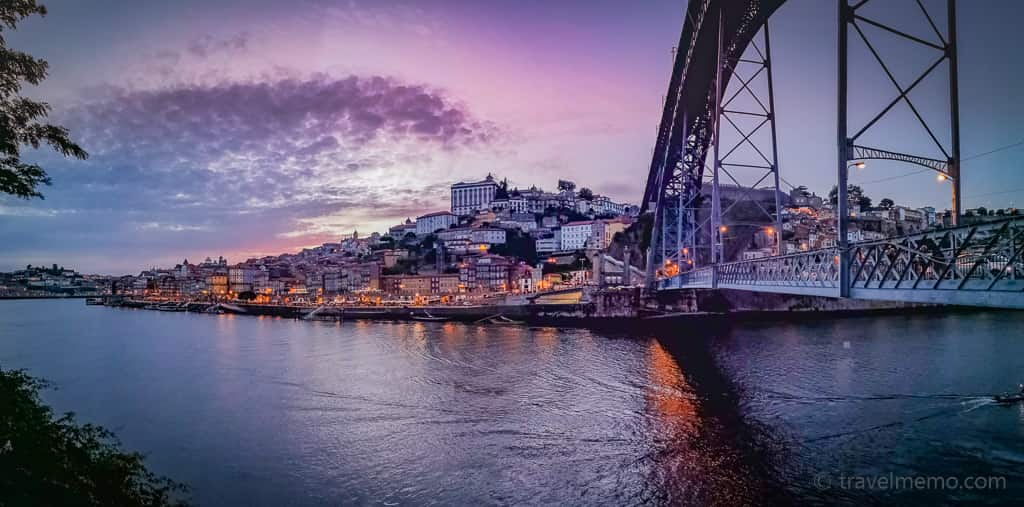
Ribeira district on the Douro with Dom Luis I Bridge
Ribeira – Porto’s Old Town
Porto is located in northern Portugal where the Douro River meets the Atlantic Ocean.
The famous Ribeira district’s Old Town, picturesque if partly fallen into ruin, stretches along the bank of the Douro. Crumbling it may be, but its historic center with the authentic harbor atmosphere and the Old Town’s charms make for a winning combination. Not for nothing has it been part of the UNESCO World Heritage since 1996.
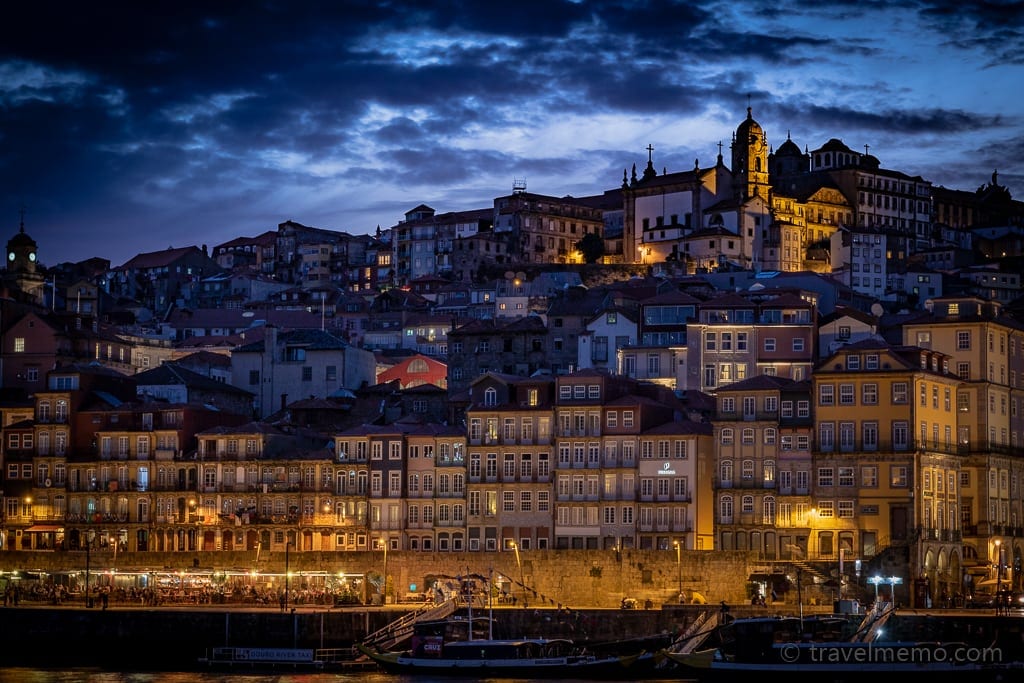
The churches and houses are impressive, covered over as they are with decorative azulejos (the traditional blue-and-white ceramic tiles with Arab origins).
They’re everywhere, and not just during the blue hour…
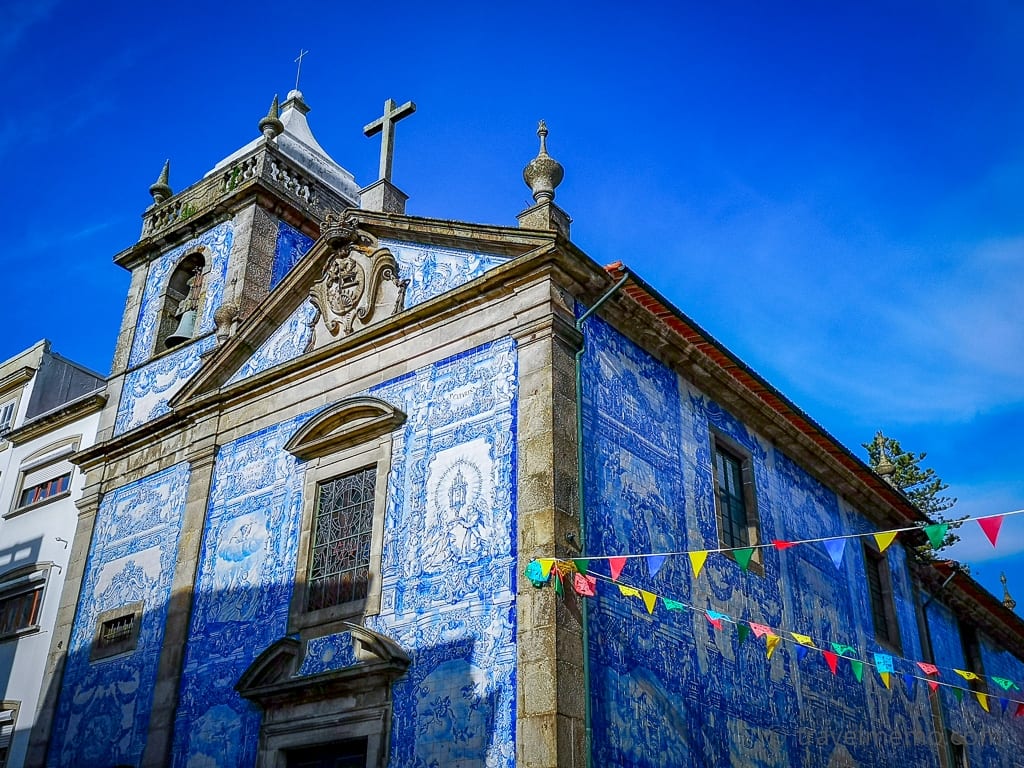
Our taxi driver may not know any English (and I am not conversant in Portuguese), but with expansive gestures he succeeds in calling our attention to the train station’s many tiles.
The locals are especially proud of the São Bento train station, seeing that it is completely covered with 20,000 azulejos.
Porto’s iron bridges and wooden boats
However, the city’s eyecatcher number 1 is the Ponte Dom Luís I arched bridge. It is too obvious to qualify for inclusion in my sightseeing tips…
The bridge’s iron work is reminiscent of the Eiffel Tower in Paris. It links Porto’s Old Town with the “new” Via Nova de Gaia district and its Quai Cais de Gaia on the opposite bank of the Douro.
The daring design of this iron bridge actually could have sprung from Gustave Eiffel’s drafting pen. It so happens that 9 years earlier he built the even more elegant Ponte Dona Maria railroad bridge a mere one kilometer upriver. His former German business partner Théophile Seyrig won the bidding for the Dom Luís I. Bridge instead.
It was in 1866 that the ironwork construction with a 172 meter span and total length of 385 meters was ceremonially opened by King Ludwig I. (Dom Luís I.) of Portugal. At the time, it was the longest arch bridge in the world and to this day it remains Porto’s emblem.
Naturally, it shares that distinction with the traditional Rabelo wooden boats that transport the port wine barrels down the river from the expansive wine-growing areas of the Douro valley.
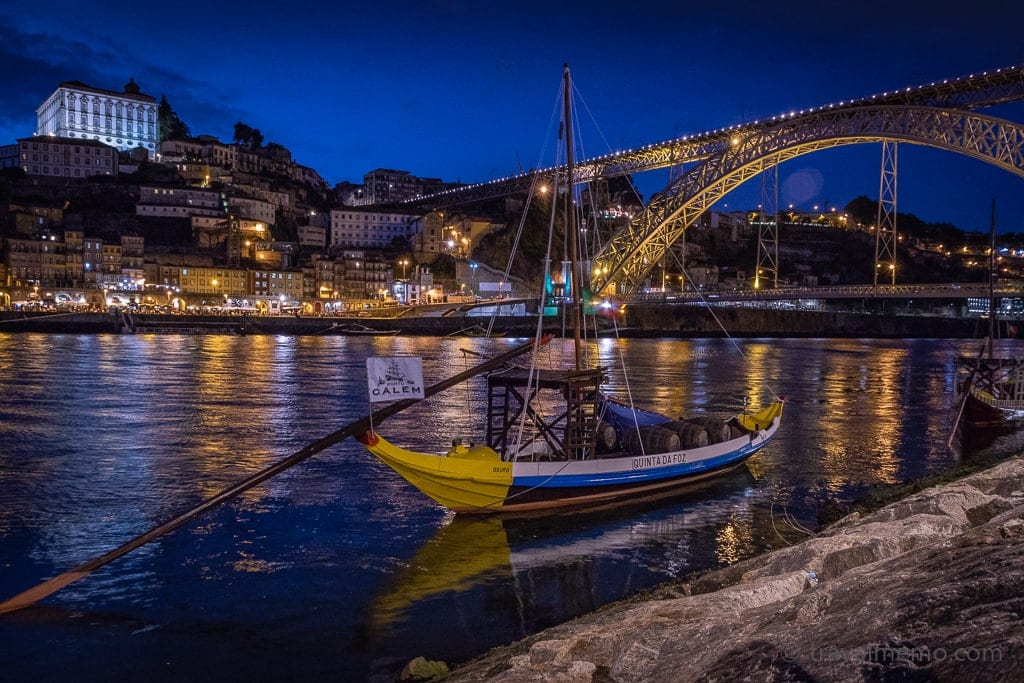
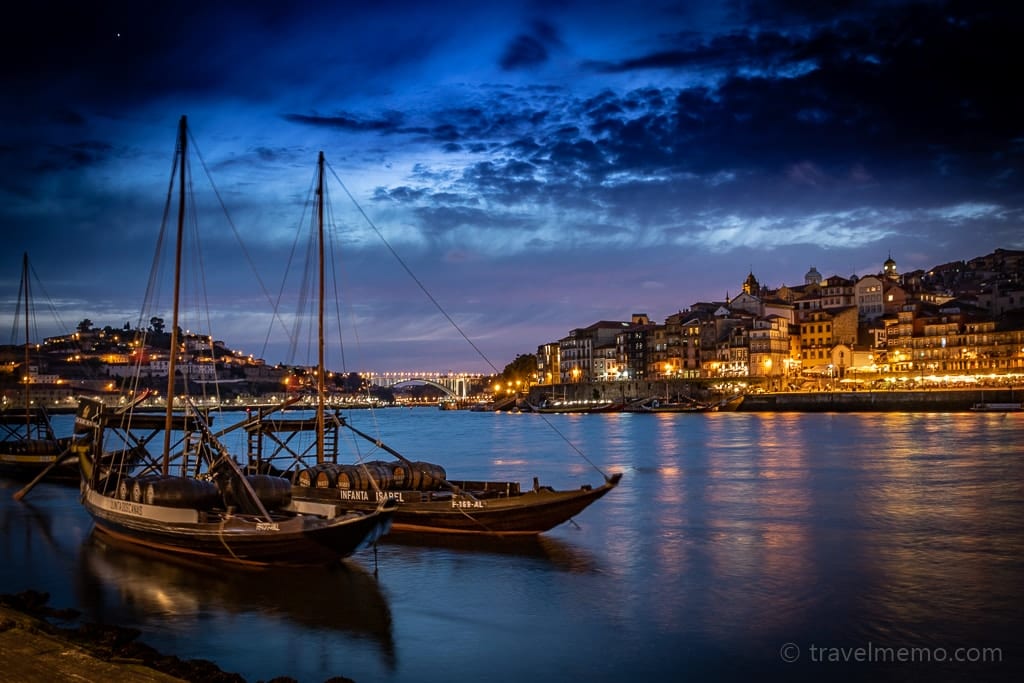
Across the river, on the Cais de Gaia the warehouses of all the important port wine makers line up.
And now, for my tips:
Tip #1:
A walk across the Dom Luís I. Bridge is definitely not to be missed – and not just because of the wine cellars on the other side. The view of Porto is spectacular! both from the span’s upper or lower deck.
Both levels are open to pedestrians. That said, people who do not take to heights lightly might feel a bit queasy from the surprisingly high upper deck!
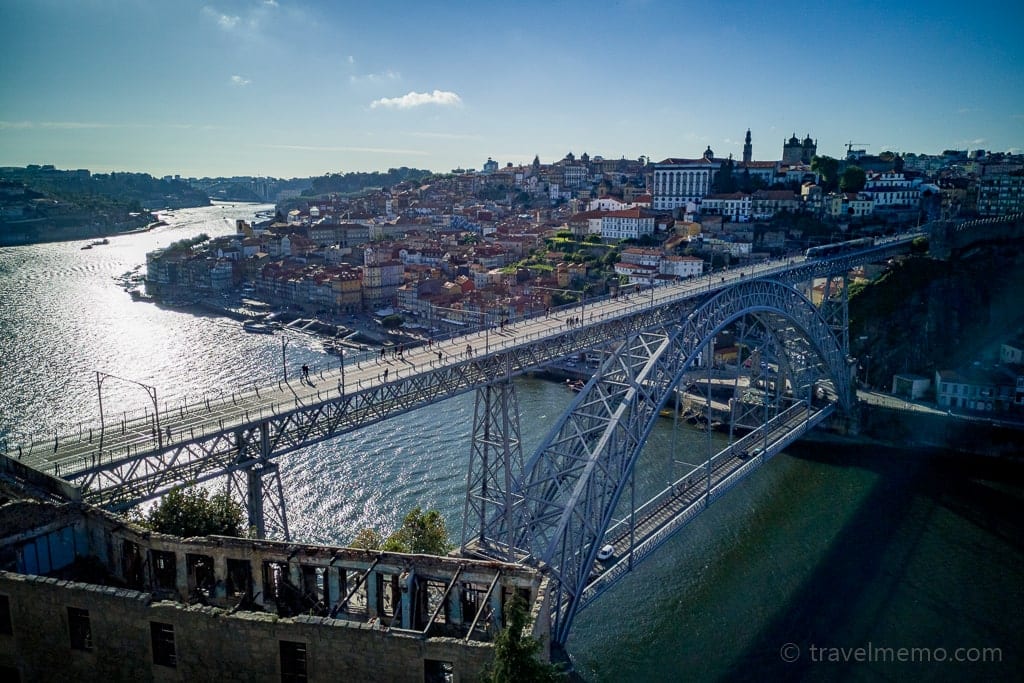
Tip #2:
If you are not ready to climb the 45 meters vertical difference on foot, you can do the practical thing and take the gondola aerial tram from the Cais de Gaia.
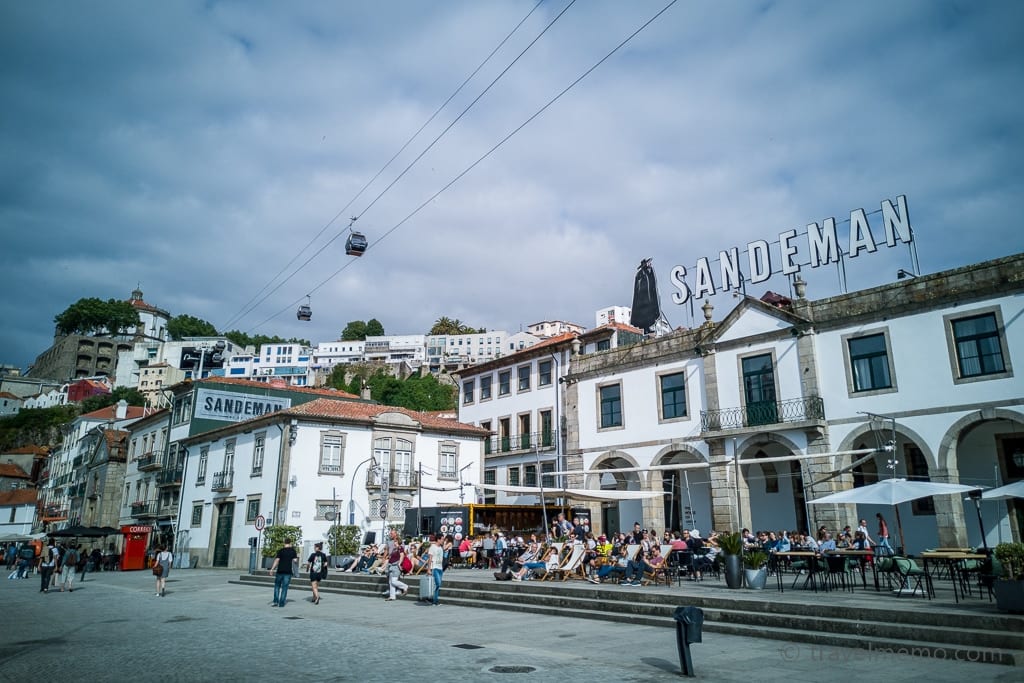
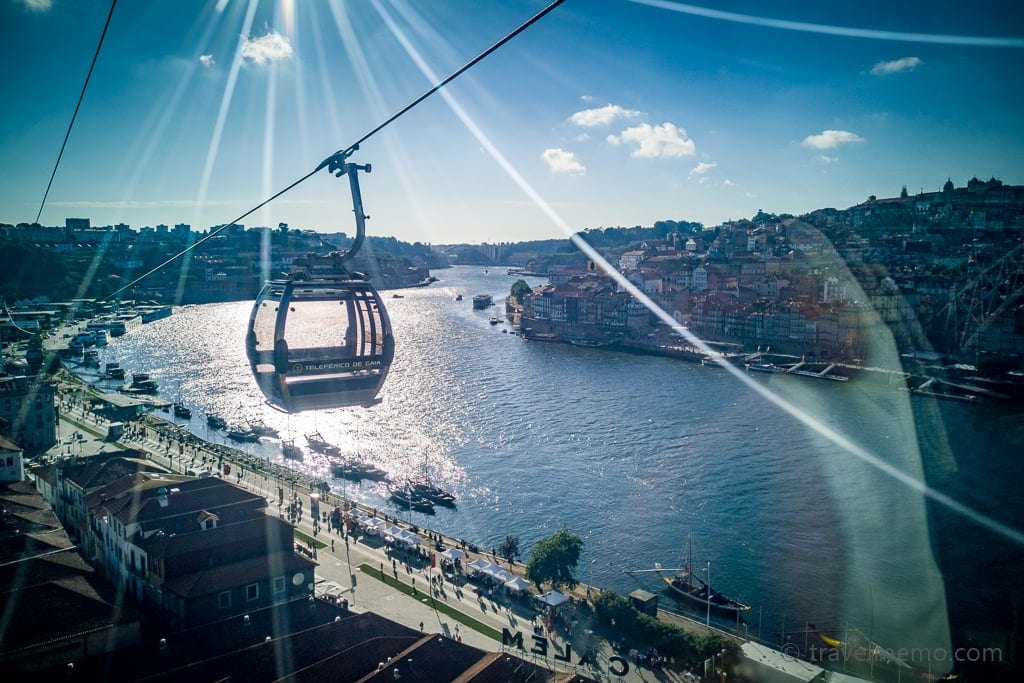
Jardim do Palácio de Cristal – Peacock in the City Park
Porto is filled with gardens and parks.
Tip #3:
The Jardim do Palacio de Cristal (Crystal Palace Park) impresses especially with the Pavilhão Rosa Mota, its iconic domed main building, the gorgeous blooms, and the sweeping views of the city.
And then there is the peacock freely strutting about the grounds. I wait, mesmerized, hoping that it will fan out its tail plumage.
Not a chance, it seems. And so I amble on. It’s not long before I realize that the park is practically crawling with peacocks! But not one shows any inclination to display the glory of its train. Just for that, they don’t get their picture taken either!
Cafés and restaurants galore – Rua das Flores
Tip #4:
In contrast to the lively Rua de Santa Catarina shopping street, romantic Rua das Flores is lined with cafes and restaurants, bars and boutiques. It definitely presents the agony of choice when it comes to eateries:
- DOP – Chef Rui Paula
- Puro 4050
- Restaurante LSD
- Restaurante Páteo das Flores
- Cantina 32
- Café & Brunch Mercador
Regrettably, we did not manage to make it into DOP by Rui Paula on Largo São Domingos 18. Three days is simply not enough to try all the beautiful restaurants… But, from what we saw, DOP was always very well patronized, and it looked great!
Right across the street is Puro 4050 at Largo São Domingos 84. Also very inviting, but, alas, once again no chance to taste it.
Just two houses down, we manage to give Restaurante LSD a try. Small, choice, and super for a snack.
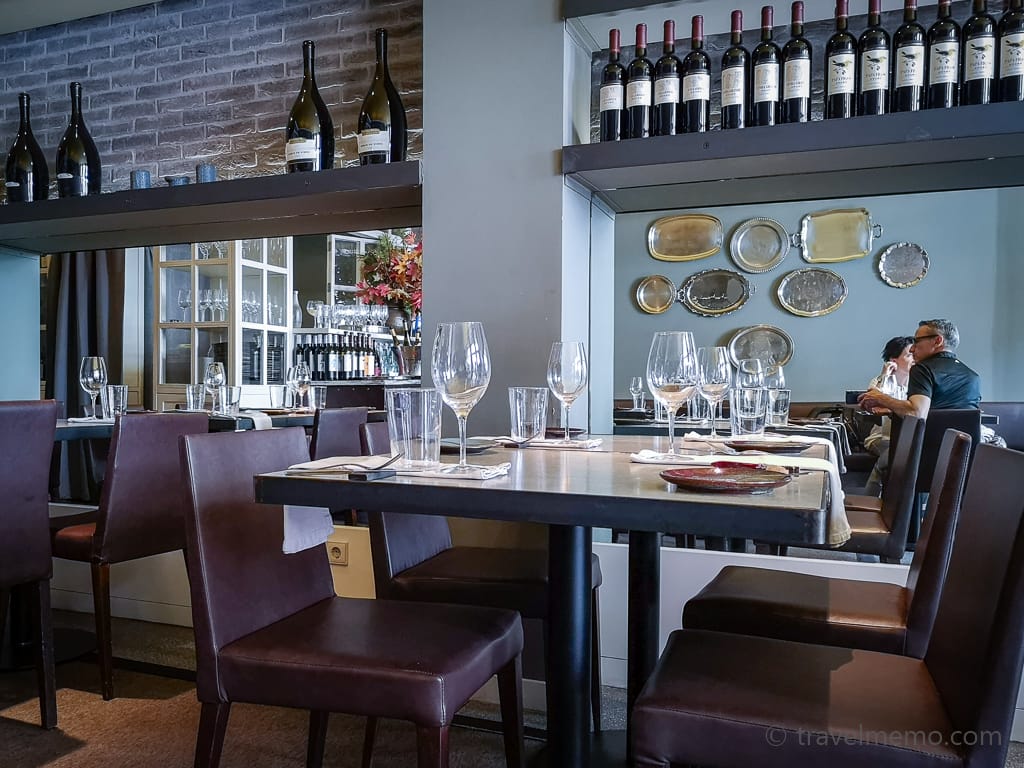
A few steps down Rua das Flores 32, Cantina 32 serves its food in a genteel ambiance. You’re better off making a reservation, we found it had a waiting line quite often.
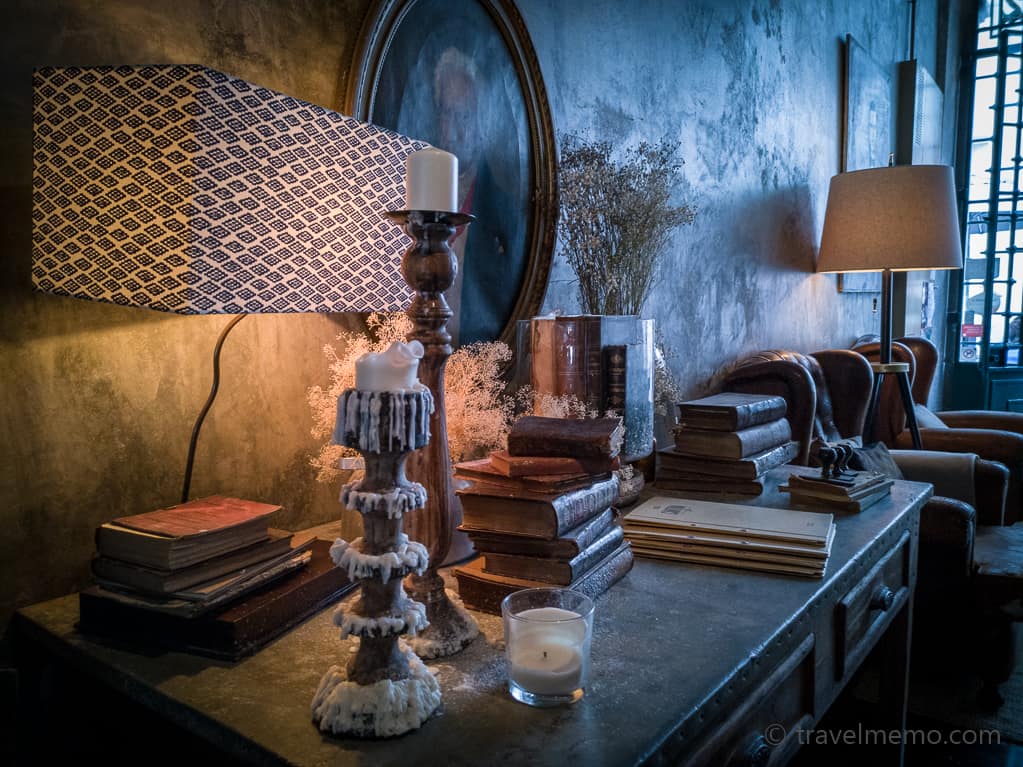
Just a few steps further, and you can eat in the stylish Páteo das Flores, either up front in the bar area or in the atrium courtyard.
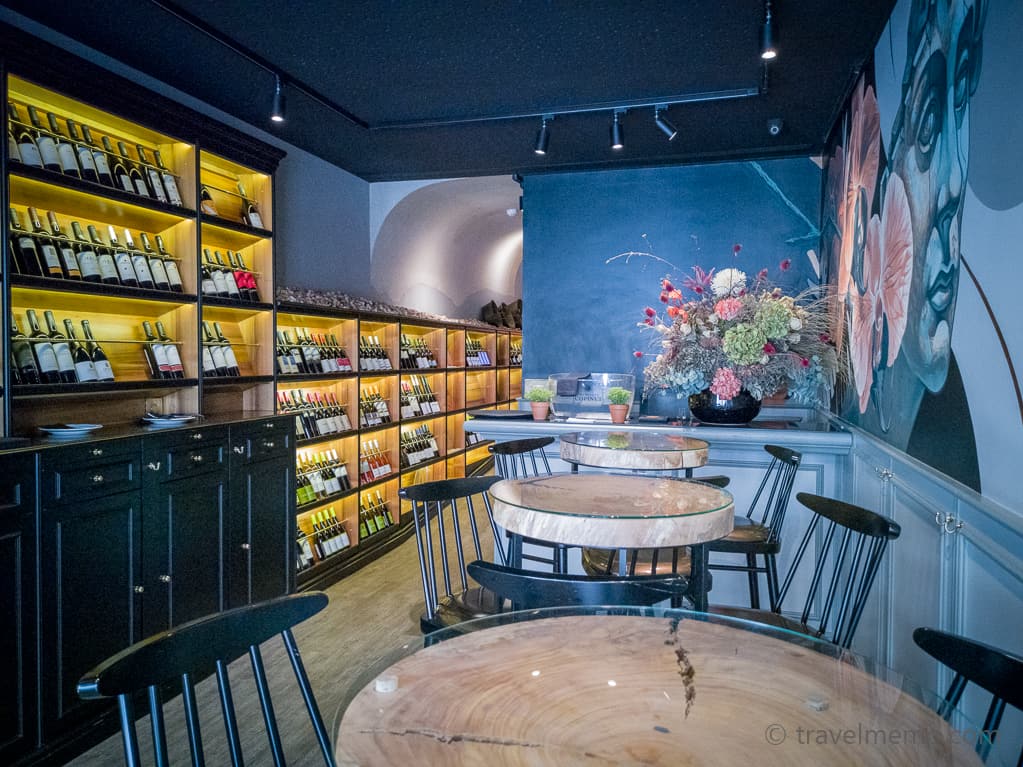
For breakfast or brunch, stay with your trusty hotel or venture into the Café Mercador or the Chocolataria das Flores.
Or try one of the many other cafés!
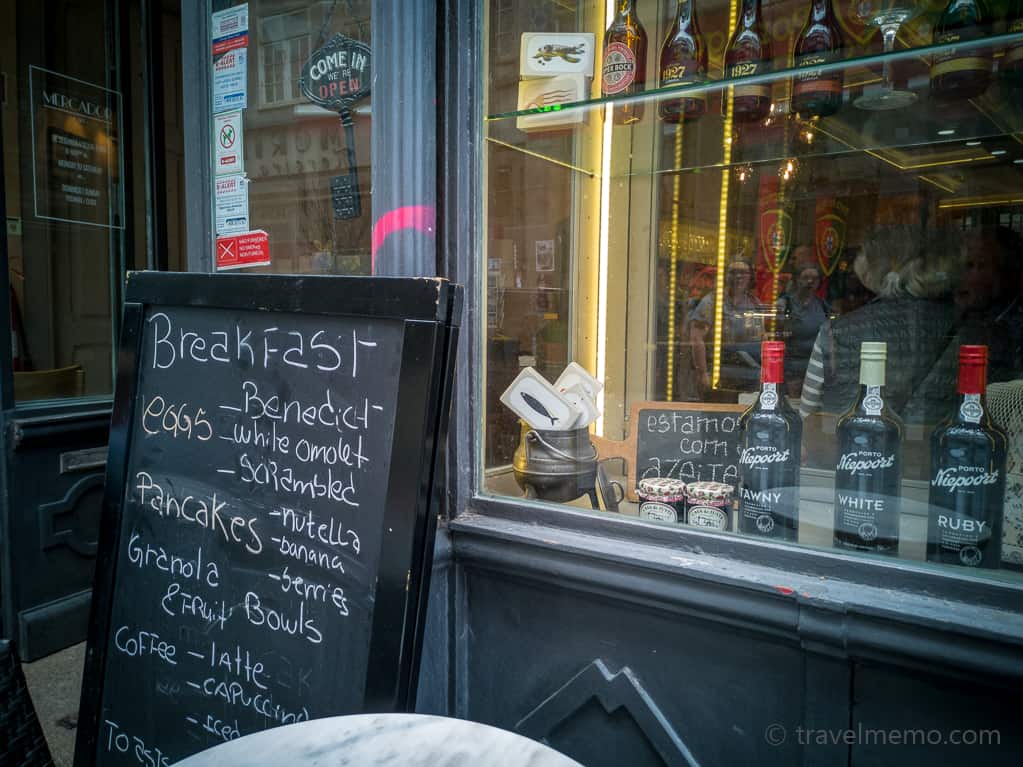
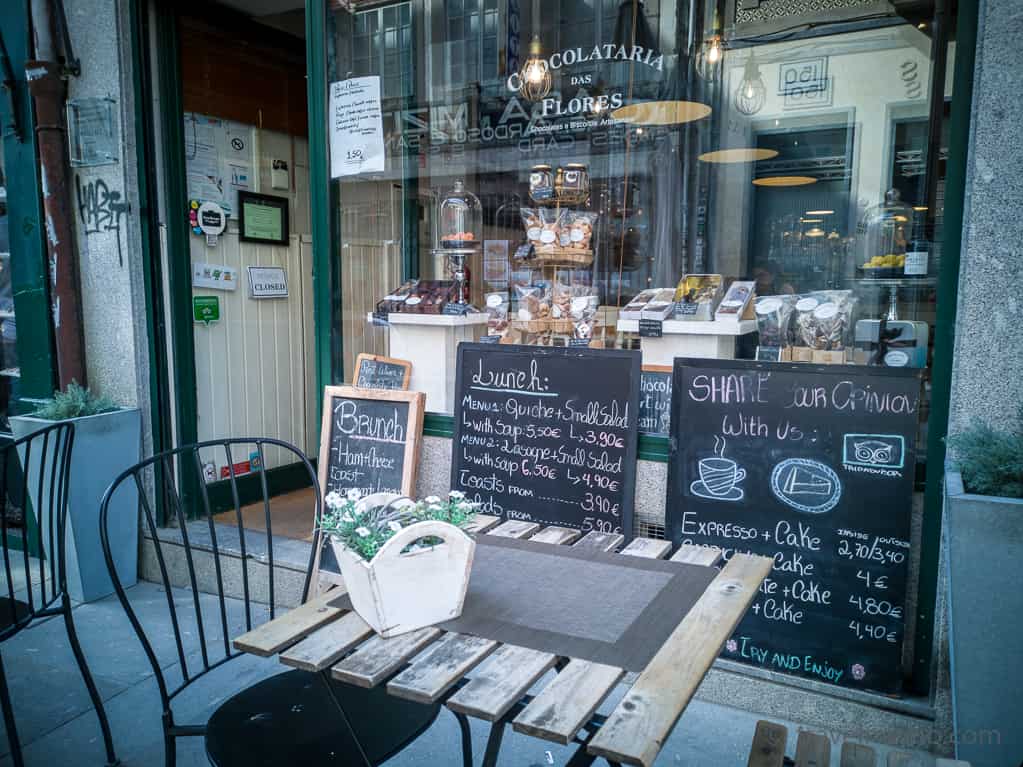
Tip #5:
Ready for a change of pace? Head for the nearby Rua de Santa Catarina shopping street…
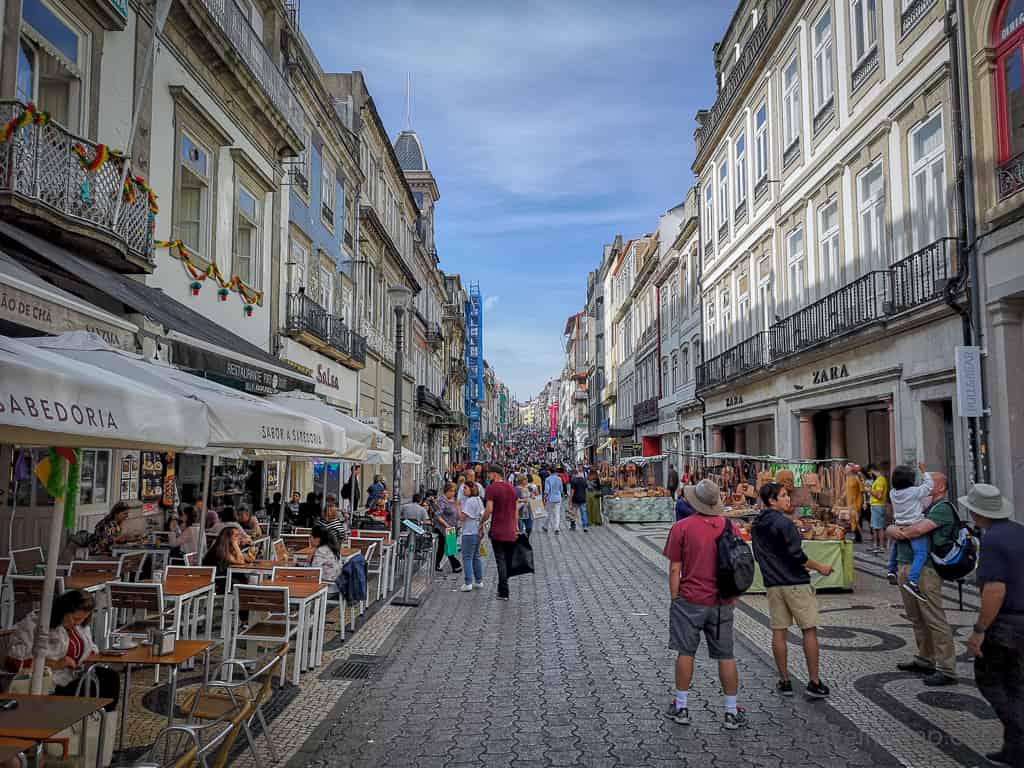
Praia da Luz – Porto’s Atlantic beach
On Porto’s Atlantic side, in the Foz do Douro district, you will discover posh villas and more stylish restaurants. Several restaurants on the adjoining beach promenade offer fresh fish on their menus.
Taxis are cheap and will get you from the city center to the ocean in ten minutes flat. It’s also possible to get a lift on the Hop On – Hop Off bus, whose Red Line also passes conveniently through here.
Tip #6:
On Praia da Luz, which means “Beach of Light”, one restaurant shines among the rest.
You could easily walk right by it, because it sits below street level directly on the beach: the eponymous Restaurant Praia da Luz.
Besides the stupendous location, it not only offers an elegant retro-chic ambiance but the food is mind-blowing good — and it comes with special effects! If anyone asks me nicely, I might even stitch a video of them together…
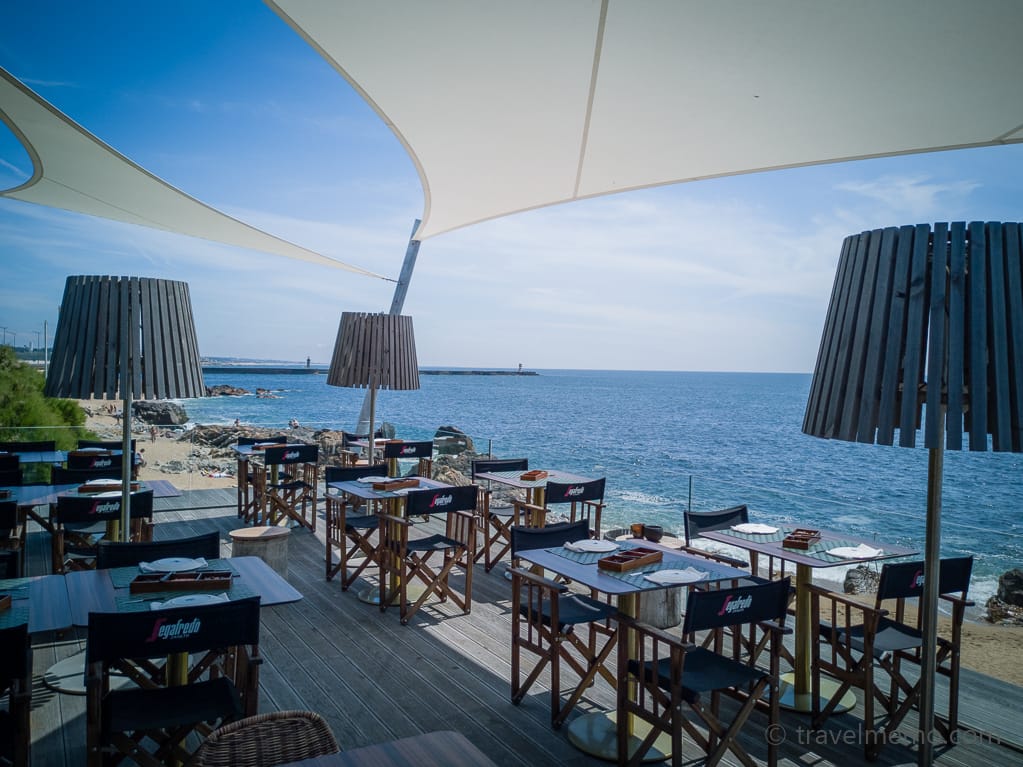
Restaurant Praia da Luz
Rua Cel. Raúl Peres
Reservation
www.praiadaluz.pt
Pasteis de Nata – Porto-style custard tarts
Tip #7:
These phyllo pastries with delicious egg custard filling already cast their spell on me in Lisbon.
There, they call them Pasteis do Belém after the Lisbon district and its pastry shop of that name, but in Porto you simply ask for Pasteis de Nata.
Size- and taste-wise, they seem identical to me. Connoisseurs will probably challenge me on this, pointing out that only the Pasteis do Belém are the genuine article.
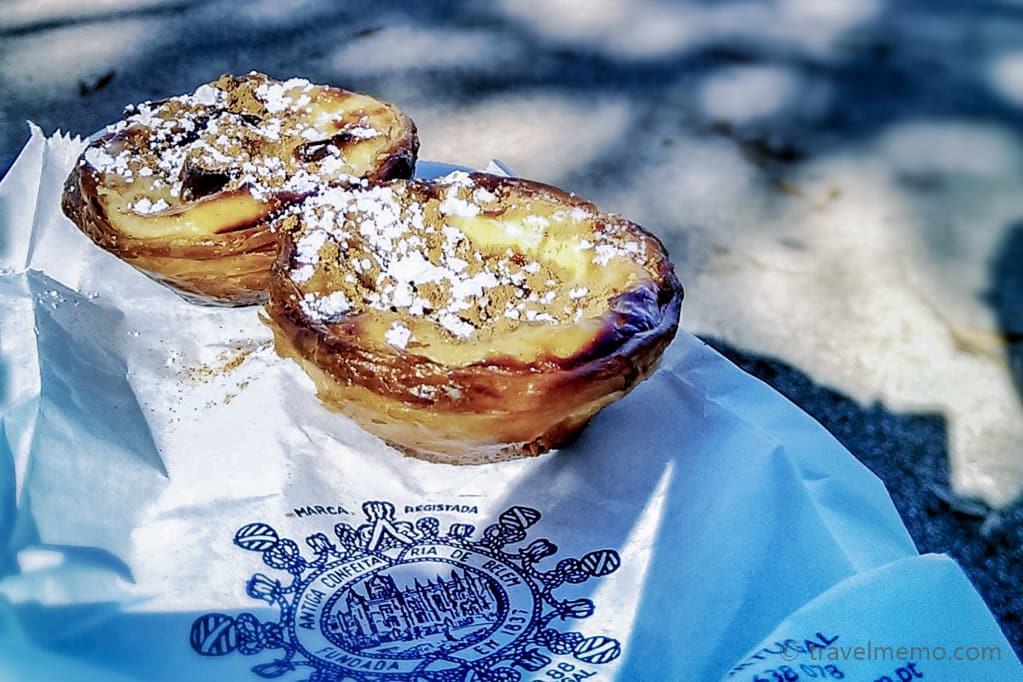
Maybe so, but in Porto, they have a slightly different take on it: after all, the recipe simply calls for flour, sugar, eggs, milk and butter. Maybe with a slight dusting of cinnamon… just what more can the folks in the country’s capital do with those ingredients?
Miguel Clarinha, who owns the legendary Lisbon pastry shop, knows. And besides him, only his two head pastry chefs are in on it. The secret’s in how they are made!
City tour by hop on – hop off bus
Porto is fairly compact and can easily be explored on foot. Still, we always find that the city tour with the hop on-hop off sightseeing bus comes in handy. It gives us a first overview of the city and its outer neighborhoods.
Tip #8:
The Hop On – Hop Off Bus Red Line will show you practically all sides of the city. The Blue Line’s red buses will also take you to the Vila Nova de Gaia district.
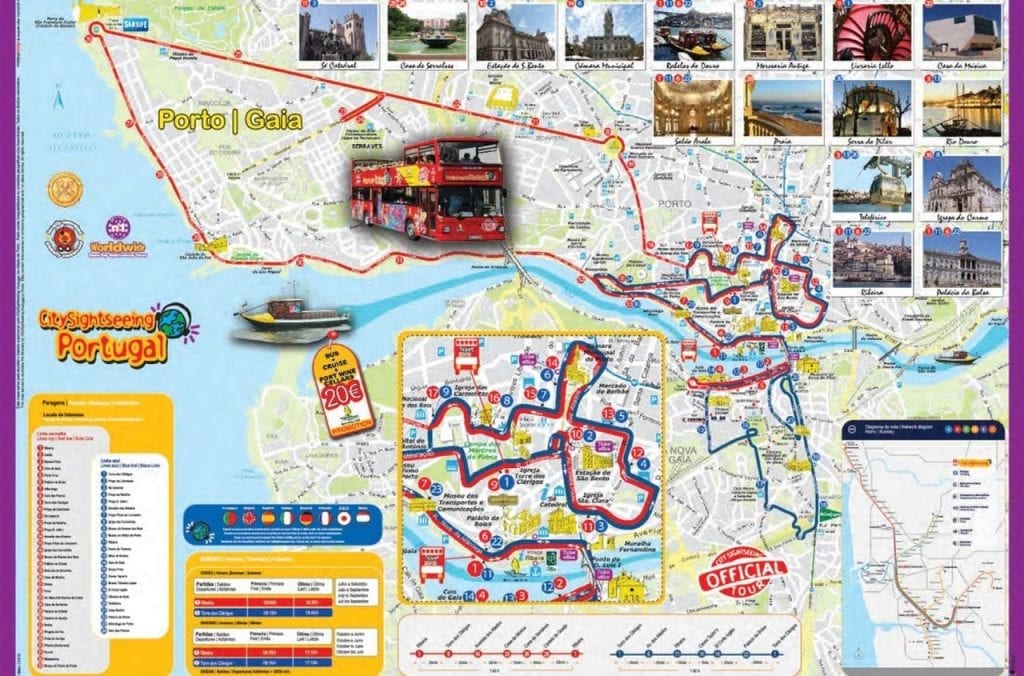
As in many other cities, the city tour double-decker buses are painted bright red. They run every 30 minutes and signs on the front of the bus show which route, red or blue, they are running on.
There is another operator that runs yellow buses and another one with very new blue buses. The latter are mostly empty, even though they follow at least a similar route as the red market leader. On my next visit, I plan to book on the blue line, because the buses are roomier.
All these buses advertise free on-board WLAN. You need to ask the driver for the sign-on password. I was not able find it posted anywhere in the buses or on the ticket. In our case, on the red bus, it was “city2009”.
With the hop-on hop-off fare it is also possible to book a short cruise on the Douro River. It takes 30 minutes and goes practically to the river’s mouth and under six different bridges, including, of course, the famous Ponte Dom Luís I.
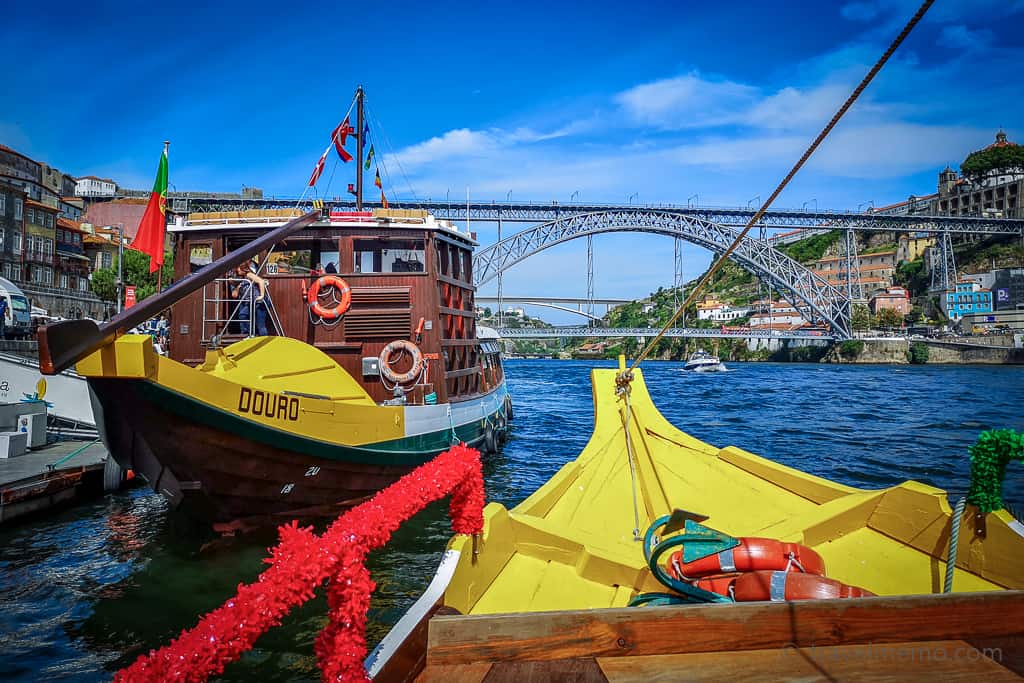
Another hop on-hop off bus booking possibility is a port wine tasting.
Tastings are offered practically on every corner, not to speak of in the many port wine cellars like those belonging to Sandeman, Taylor’s, Offley, Maynard’s, Kopke, Niepoort, Dalva and Fonseca. An alternative is the coupon entitling you to a glass of port that comes with your ticket for the Vila Nova de Gaia aerial tram.
Very convenient!
Boutique hotels in Porto
Porto offers many decent hotels.
Tip #9:
An erstwhile iron warehouse directly on the Rua das Flores rated especially highly with me this time.
The industrial-chic boutique hotel Armazém Luxury Housing may do without the marble, but its stone and iron are enough to shut out the noise of the pedestrian zone and show a love of detail.
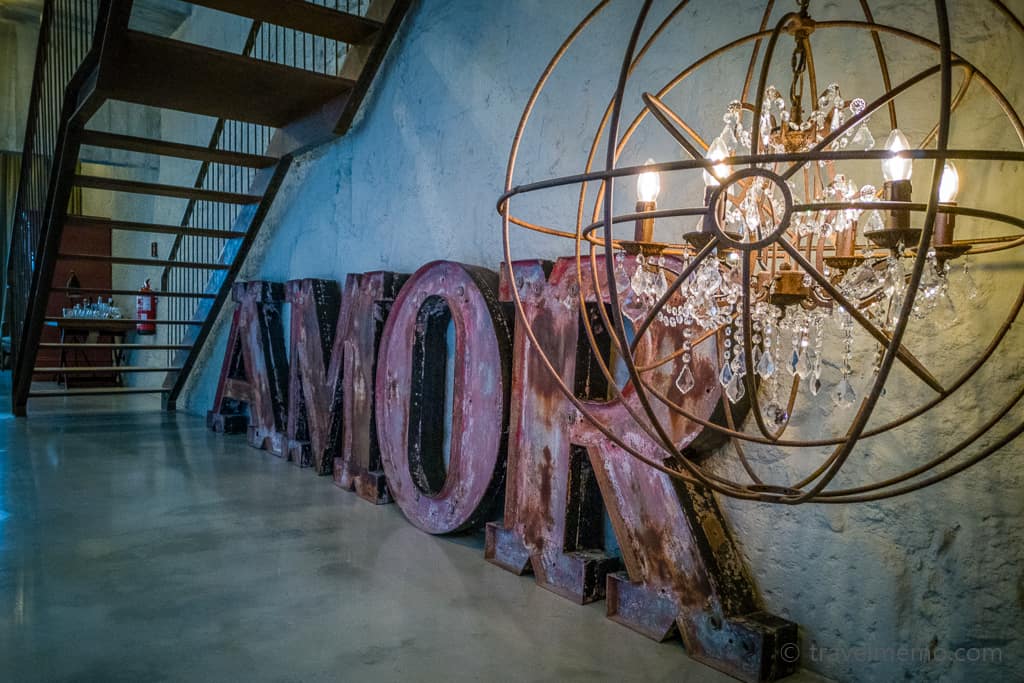
In this comfort oasis, get a nourishing breakfast from the buffet before setting out to explore the city.
Here is my review of this hotel.
And for the finale, (another) little glass of port?
Vinho do Porto is a sweet wine and is only produced in the Douro Valley. It comes in ruby or tawny varieties, the one aged in the bottle, the other in oak barrels. For all the varietal details, I refer you to Wikipedia.
As a consumer, the question that interests me most: How long can port be kept open?
The answer is clear: It depends…
Tip #10:
Noble vintage port should be consumed within 2 – 3 days; in the interim, keep it in the refrigerator. Most tawny ports will keep uncorked for 5 – 6 months, provided they, too, are stored in the fridge.
It holds generally that the older the port, the more quickly it should be consumed.
And with that, a hearty saúde!!
Side trip to the Douro Valley
Tip #11:
As long as we’re on the subject of the Douro… if you want to spend more than 3 days in or around Porto, I recommend an excursion into the Douro Valley! The easiest way there is via rental car — or a river trip.
The Douro Valley is regarded as one of the world’s most remarkable wine-growing regions and has been recognized by UNESCO as a world heritage site.
The hilly landscape is fabulous to look at and right away it feels warmer by a few more degrees than Porto. The grapes bask in the warmth. And so do I!
Tip #12:
By the way, sitting on 20 acres in the heart of this idyllic region is the luxury Six Senses Douro Valley Hotel. Definitely worth another side trip ;-)
Here is my review.
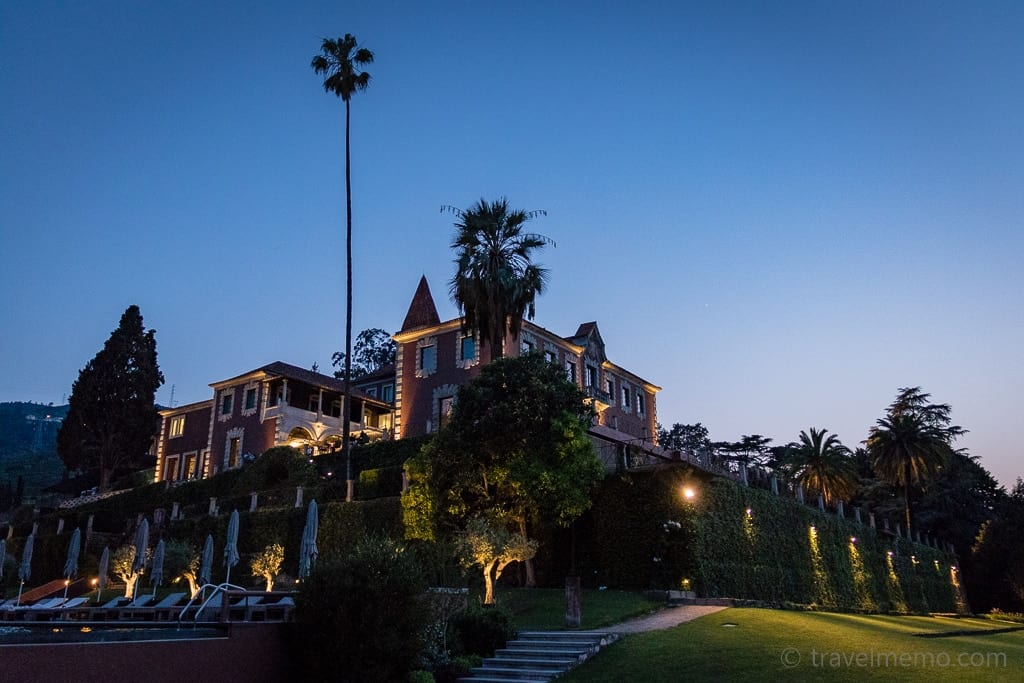
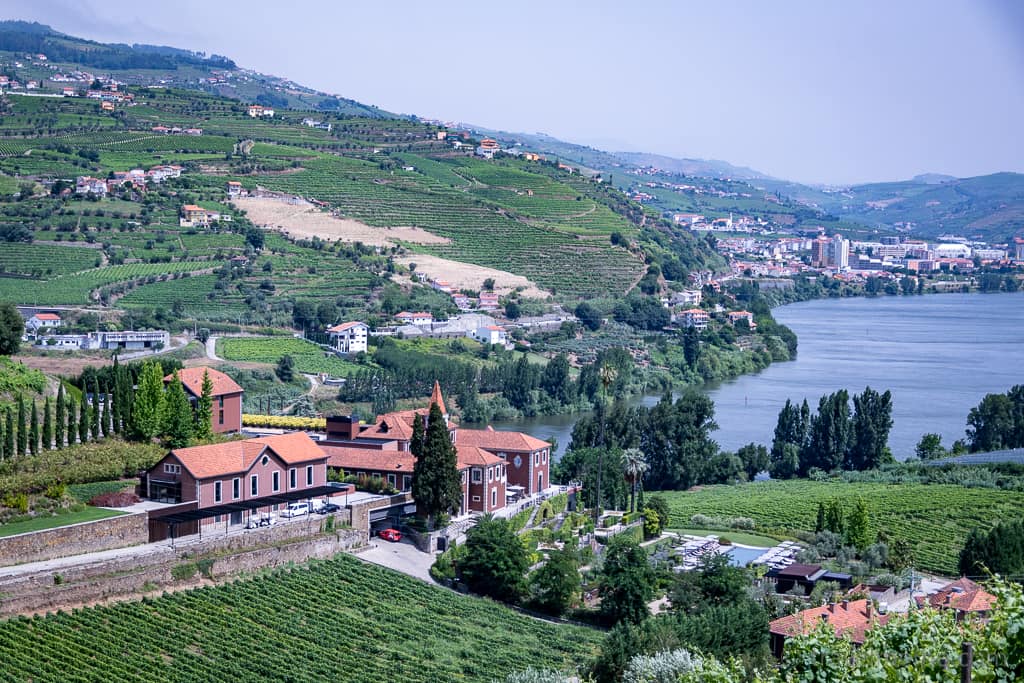
Getting there: Zurich – Porto
Both TAP and SWISS have direct flights to Porto.
Tip #13:
Look for the english “Oporto” on the airport destination board instead of “Porto” like I did…
The flight takes about 2 hours. Thanks to Katja’s alertness, we just made ours.
A taxi from Porto’s airport to the Old Town center of the Ribeira district costs around $30 and takes about 25 minutes during light traffic.
If you plan to go on to the Azores from here like we did, you can fly to the Atlantic island of São Miguel from either Porto or Lisbon. A capital idea, as Katja makes clear in her travelog. ;-)

